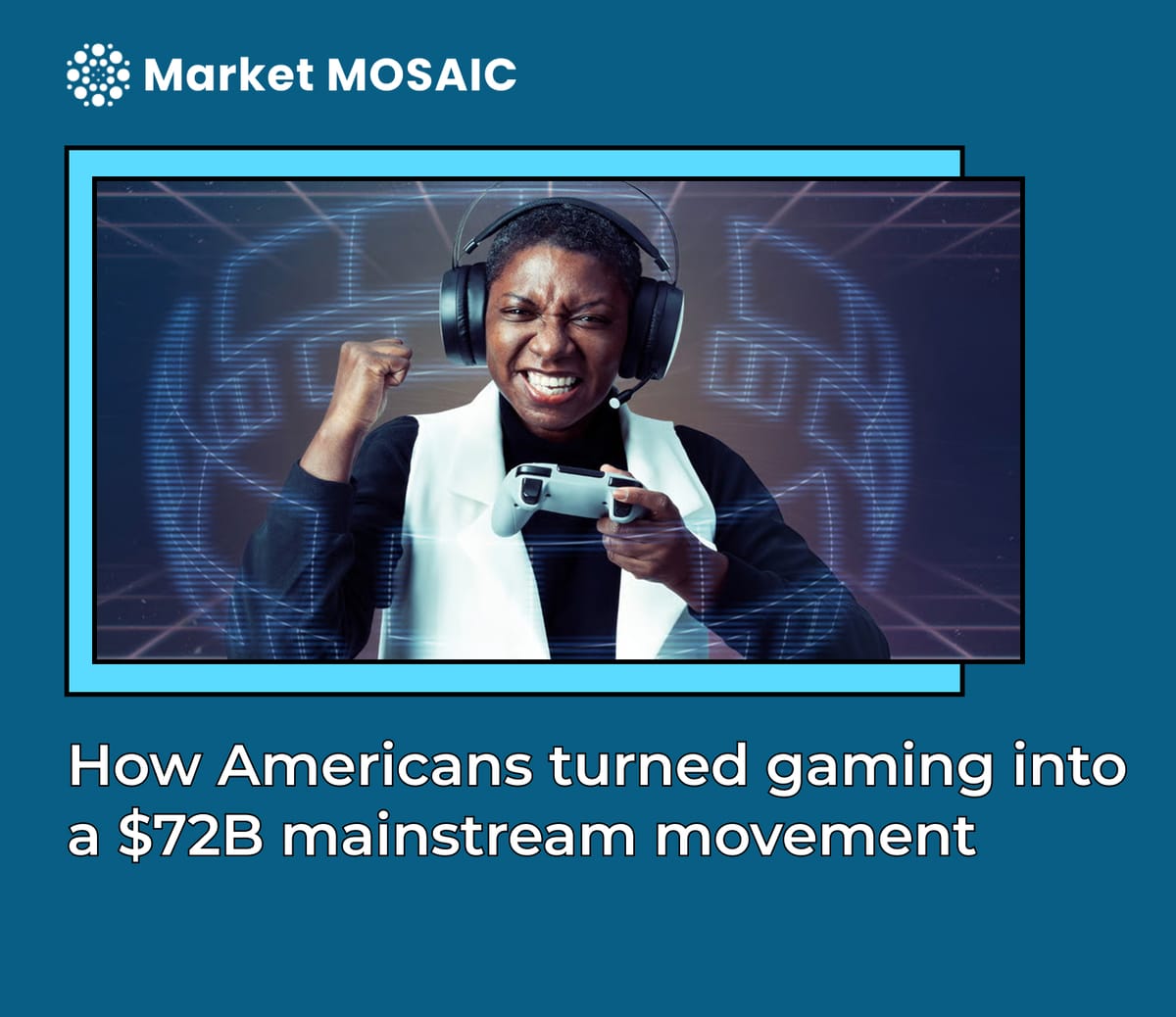How Americans turned gaming into a $72B mainstream movement

In 2024, the gaming industry in the United States reached a staggering $71.92 billion in revenue. But the most compelling number isn’t financial, it’s behavioral. According to our latest data, 71% of U.S. consumers played a video game in the past month, a figure that signals far more than the popularity of a pastime. It reveals a shift in cultural engagement and digital behavior that businesses can no longer afford to ignore.
Once the domain of teenagers in basements or hobbyist PC users, gaming has exploded across every demographic. Mobile gaming leads the charge, with 65% of consumers engaging via smartphones and tablets, making it the most accessible entry point. Traditional platforms continue to hold strong: 36% of Americans are playing PC games, and 35% are on consoles but these platforms attract more committed users. Console gamers, for example, log average sessions of 2.6 hours, while mobile gamers engage in shorter bursts of approximately 42 minutes per session.
From entertainment to economic ecosystem
With nearly three-quarters of the U.S. population gaming monthly, the ecosystem has become fertile ground for consumer engagement, brand storytelling, and monetization. The question now facing executives and investors isn’t whether gaming is relevant, it’s how deeply it’s already integrated into the consumer journey.
Gaming is no longer just a platform for play, it’s a hub for commerce, connection, and content. In 2023, 82% of gamers made in-game purchases, fueling a robust microtransaction economy and shaping the future of digital retail.
What this means for strategy and leadership
Gaming platforms offer a level of behavioral insight that few digital channels can match. They capture real-time data on user attention, interaction patterns, and emotional engagement. For companies looking to optimize customer retention or refine their digital experience strategies, gaming provides both a blueprint and a playground.
For business leaders, this presents an urgent opportunity. Companies must become platform-agnostic, adapting to behavioral differences across mobile, console, and PC
Furthermore, the sharp increase in older gamers opens an entirely new market segment. Gamified tools can be adapted to sectors often left out of digital innovation like healthcare, financial services, and education offering more engaging ways to interact with mature audiences.
At the same time, brands far beyond the gaming industry are beginning to integrate game mechanics into everyday business models. Loyalty programs, customer onboarding, e-learning platforms, and fitness apps are using gamification to increase stickiness and satisfaction.
Smart businesses won’t just observe this trend, they’ll actively participate in it. Whether through in-game collaborations, gamified product design, or virtual brand activations, forward-thinking companies will use gaming to remain culturally relevant, digitally native, and commercially strategic





